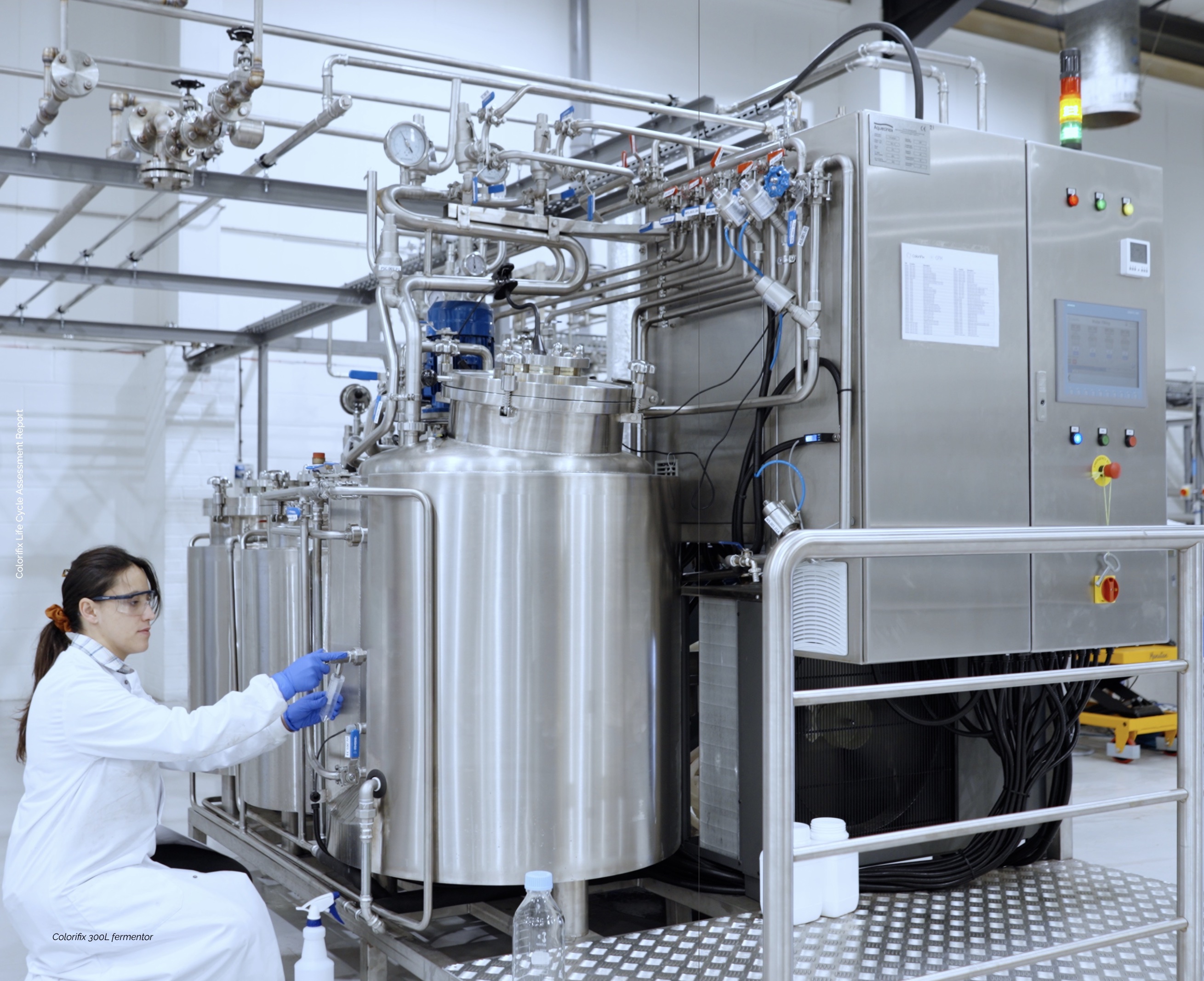
To download the full report, click here Colorifix Environmental Impact Report
As demand for sustainable practices grows across the textile supply chain, Colorifix has proven through its latest environmental assessment that its biologically synthesised dyes are significantly less harmful to the environment than conventional, chemically synthesised dyes.
The results of Colorifix’s Life Cycle Assessment (LCA) strengthen the Norwich-based company’s position as the emerging leader in supplying environmentally friendly dyes to textile producers and fashion brands globally.
Orr Yarkoni, CEO of Colorifix said: “Fast fashion and a changing environment have rightly focused consumer attention on the impact of the textile and apparel industries. The dyes that colour our clothes are all too often made and applied through a process that damages the planet by using too much water, power, and toxic chemicals. We started Colorifix to develop a natural alternative to this crucial input in the textile supply chain. We are delighted with the results of our Life Cycle Assessment, which demonstrates the environmental advantage of the Colorifix technology.”
With recent funding from H&M’s venture arm H&M CO:LAB, Colorifix continues to develop its process for biologically synthesising colours as they occur in nature. DNA sequencing of a leaf, stone, flower or feather is the basis of Colorifix pigments that are authentically leaf green, pebble grey, daisy yellow or raven black. The company turns pigments into dyes using microorganisms that multiply during fermentation. The natural bonding elements within these microorganisms fix pigments to textiles with far fewer of the added salts that conventional dyeing requires. The process uses renewable feedstocks, far less water and other resources, and virtually eliminates the use of toxic chemicals.
The LCA, conducted at a dye house in Portugal, compared Colorifix dyeing to conventional dyeing across a range of factors like water, electricity, and natural gas consumption. It also analysed the relative impact of dyeing on resource depletion, global warming, and other macro-environmental factors.
Jim Ajioka, the Colorifix CSO remarked: “The LCA of our process is essential as it not only confirms our projected reduction in environmental damage, but allows our partners in the dyeing industry to estimate potential monetary savings if they use Colorifix technology. Moreover, the LCA highlights where improvements in the process could lead to even greater reduction in environmental damage”.
Across every single factor, the Colorifix process had lesser impact than the conventional dyeing process run at the same plant, including:
-77% reduction of water usage
-80% reduction in chemicals usage
-71% reduction in natural gas usage
-53% reduction in energy
-31% lower contribution to global warming
-38% lower contribution to ozone layer depletion
-61% lower contribution to abiotic depletion of elements, largely through lower usage of added salts
-37% lower contribution to eutrophication, or the environmental impact of excessive use of fertilisers and other macronutrients.
Colorifix has been scaling up and preparing for international expansion since May when it
closed an £18m Series B fundraising led by H&M CO:LAB and joined by Regeneration.VC,
Cambridge Enterprise, Sagana, Bombyx Growth Fund SCsP and others. The company has
developed partnerships with sustainable clothing brands including Pangaia.
To download the full report, click here Colorifix Environmental Impact Report
Fore more information please email us at:
info@colorifix.com